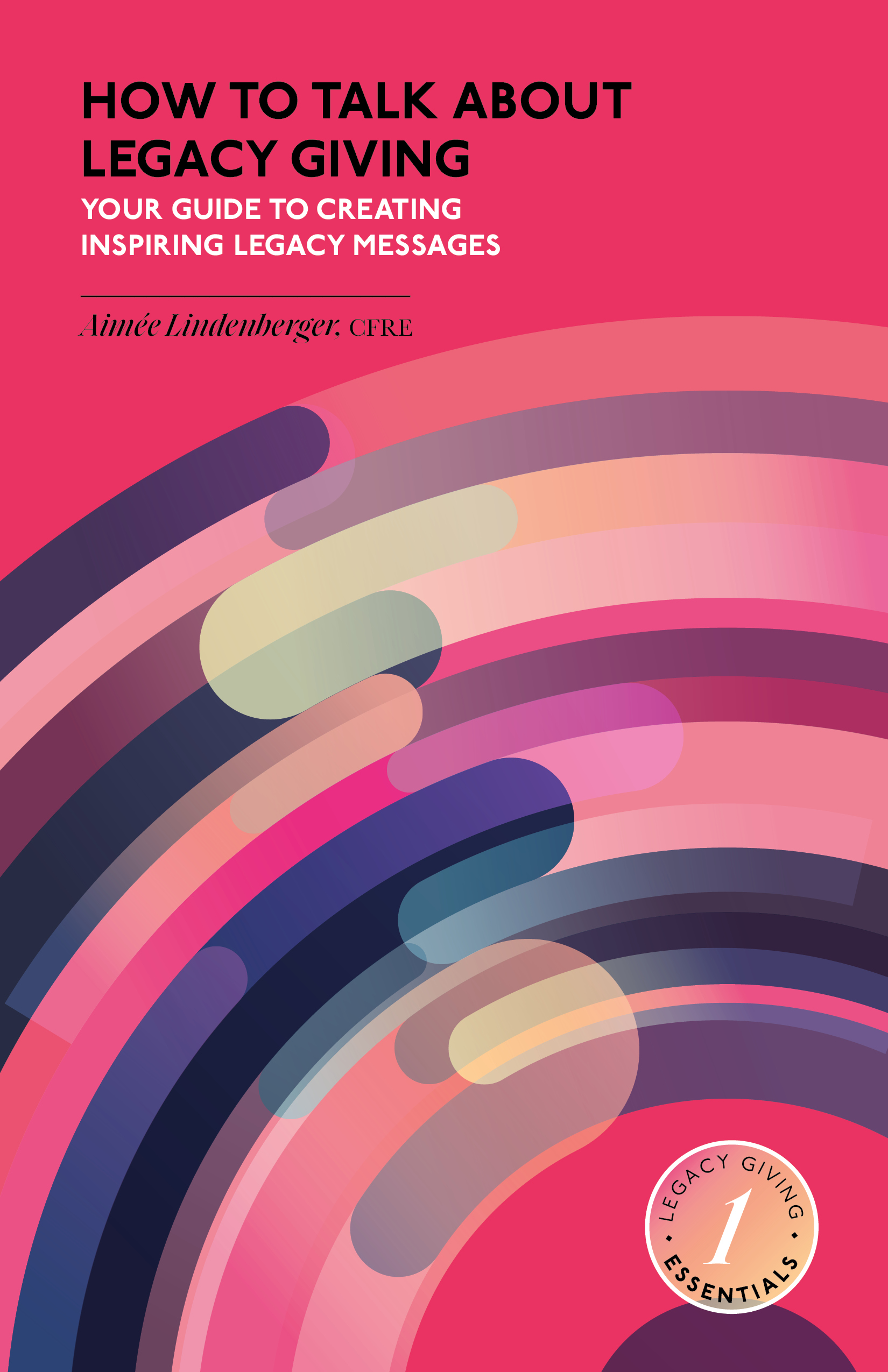- Home
- About Us
- The Team / Contact Us
- Books and Resources
- Privacy Policy
- Nonprofit Employer of Choice Award

 Talking about legacy giving is so much easier than we’ve been making it!
Talking about legacy giving is so much easier than we’ve been making it!
So, let’s take a deep breath and let go of any preconceived notions that we need to be well-versed in tax planning, estate law, or financial vehicles to talk about legacy giving.
Let’s start fresh.
Legacy giving — more than any other kind of giving — is about the person doing it.
It says something about who they are, what they believe, their values, the things they find meaningful, and what they want the future to look like even though they won’t be there to see it. All these things come from within.
And, since the people creating legacy gifts already have all this within themselves, we don’t really need to tell them anything, right? We don’t need to inform, educate, or teach donors about legacy giving.
You don’t need to be an expert to excite someone about the potential power of their legacy. You can simply talk to them about what they care about and the vision of a better future that you — and they—are trying to achieve.
All of these people can look at it with new eyes, because at its heart, legacy giving is just about what people care about and their vision of a better future and anyone can talk about that!
Legacy giving is about our life story
Occasionally charities receive “out-of-the-blue” legacy gifts from someone who had no prior giving history with them. But that is not the norm. Most often, legacy gifts come from donors who have long-time (sometimes many decades long) connections to your organization or cause.
These connections can be incredibly deep and multi-faceted. And while we may not always know what they are, they are virtually always there.
The specific connections may be things like a supporter’s first motivation to get involved, or the circumstances going on in their life at the time; whether they’ve had friends or family connected to the cause, or perhaps they—or someone they knew—directly benefitted from the work of the organization.
You may see signs of their deepening connection to your organization over time. Maybe they start volunteering in addition to giving, or they move from an annual donation to monthly giving, or they chip in for a capital campaign in addition to their regular gifts. Sometimes the deepening of the connection is due to the sheer longevity of the attachment to, and relationships built, with those at the organization including the stories you’ve shared, the demonstrations of the impact their gifts have had, and a sense of progress on the big picture that has been achieved throughout the years. In all these things, you can see evidence of how your organization is woven throughout the supporter’s life story.
These long-term autobiographical threads show up in donor conversations or in legacy survey responses as statements like:
Why are these connections so important?
Well, as Dr. Russell James found in a series of fMRI studies — where individuals were asked several questions about volunteering and giving to charity while in an MRI machine — asking people to contemplate legacy giving questions activates two parts of the brain:
The hypothesis is that for a supporter, the act of considering a legacy gift to a charity is about seeing the arc of how the gift fits within the story of their life up to now, and imagining their legacy as the continuation of their life story into the future.
The key with Dr. James’ fMRI studies is that when the participants were considering the questions about volunteering or making an immediate gift, these areas of the brain were not activated in the same way.
Legacy giving messaging is much more successful when we understand and integrate these insights. Highlighting the longevity of a donor’s involvement, (including the number of ways they have been connected over the years) and painting a picture of a better future that they can vividly imagine will create legacy messaging that activates the right parts of a supporter’s brain — a crucial step toward inspiring them to create a legacy gift.
This excerpt is from “How to Talk About Legacy Giving” by Aimée Lindenberger. Take advantage of a pre-publication special offer—save $8 off the regular price of $32.